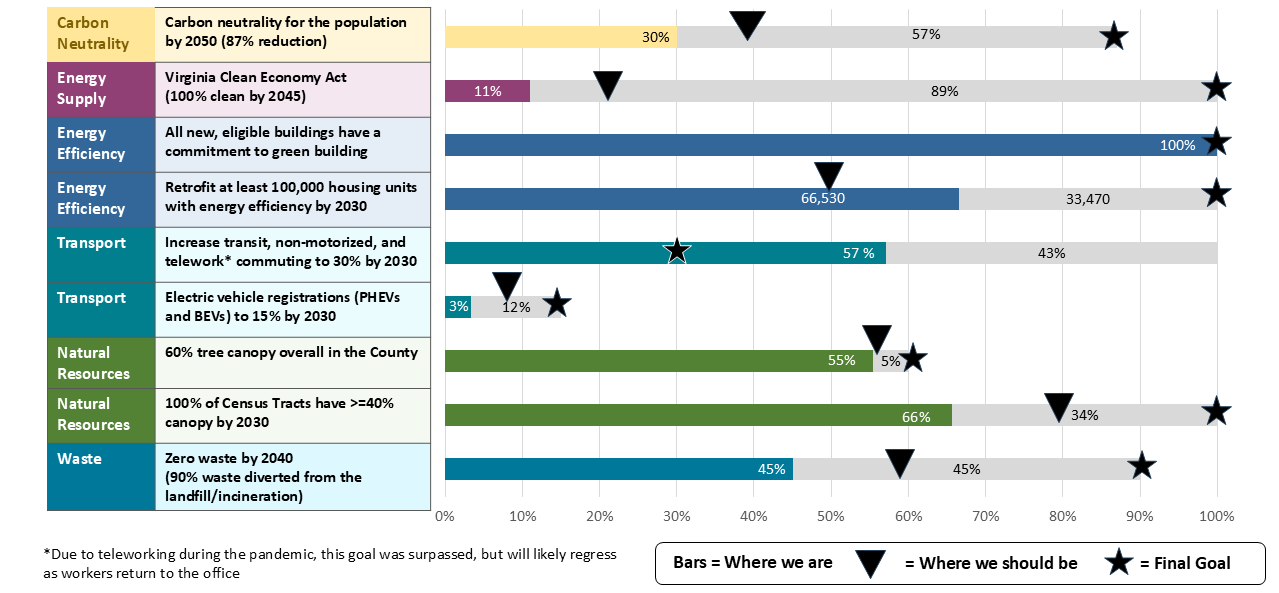Greenhouse gas emissions, such as carbon dioxide, trap the sun's radiation and warm the Earth's surface - which leads to cascading effects on the climate. To lessen the impacts to human health and the environment, Fairfax County has adopted ambitious climate action goals, including energy carbon neutrality across Fairfax County government operations by 2040 and community-wide carbon neutrality by 2050. The strategies and actions to meet these goals are presented in the Community-wide Energy and Climate Action Plan (CECAP) and the Operational Energy Strategy (OES).
This page highlights data and metrics for the topic of emissions reductions overall and provides links to additional metrics and details on programs and actions for specific sectors including Buildings, Energy Supply, Transportation, Waste, Natural Resources, and Community Services.



